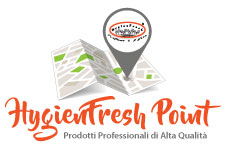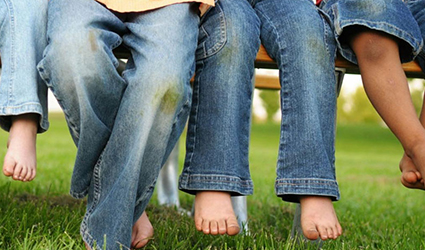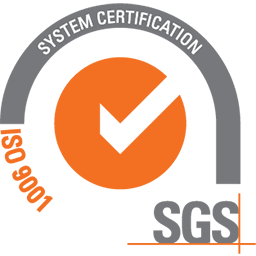The spotting process is complicated and full of risks; to avoid damaging the clothes while trying to clean them, it is necessary to understand the origin of stains and to use the corresponding spotting agent.
You have to become a real cleaning expert!
Through this brief article you’ll learn everything you need to know about stains.
A very simple method to classify stains is to divide them in 2 big categories:
- Non-oily stains
they are affine to water and when they receive it they become darker. Among them we can find grass, fruit, coffee stains etc.. - Fat stains
they are water repellent, this means not associated to water. When wet they do not change colour because they tend to push it away. Among them we can find oil, glue, ink stains etc..
An additional classification of stains, even more specific, is possible considering their composition and nature:
- Protein Stains
They are also called enzymatic stains, composed by proteins. They can always be removed with the help of specific enzymes. (Blood, food, sauces, egg, grass, etc...) - Oxidisable Stains
Composed by dyes, tannins or metallic oxides (such as rust stains) - Sweat Stains
Composed by a non-greasy and a grease part, among these stains we can find also urine stains. - Lipid Soluble Stains
Stains not related to water and which can be removed with solvents (such as ball-point pen, glue, varnish, lipstick stains etc...)
|
IMPORTANT Before proceeding with spotting and the research of the kind of stain we have to remember these simple rules:
|
|
|
NON-OILY STAINS These stains can be easily removable with water and surfactants. Nevertheless they present difficult substances to remove such as pigments, tannins, sugary components and coloured components. In order to eliminate these elements it is necessary to use the specific spotting agent. To remove these stains safely it is possible to use: D5 Magre |
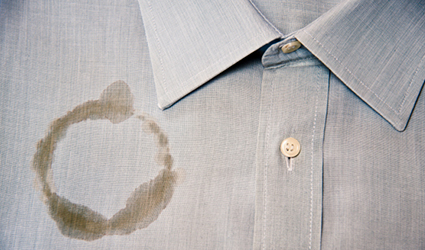 |
FAT STAINS Fat stains are usually composed by triglycerides, synthetic and natural oils or fat acids. Their structure, mainly apolar, makes them hydrophobic. In order to remove them it is necessary to use surfactants or degreasing solvents. They are easily removed during wash with solvents, while we can find some problems during laundry. Tintolav suggests PREZYM. The new BI-ENZYMATIC degreasing pre-treatment. Pre-spotting agent without comparison, active against all kind of stains. We can use also Oxon Foam. |
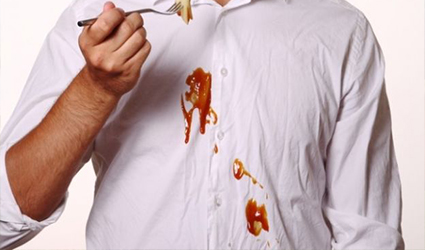 |
PROTEIN STAINS Protein stains, also called enzymatic, are composed of proteins. Proteins, if denatured, (change process of the protein structure caused ba an external agent) become insoluble. So proteins can fix irreversibly to the garment and stain it irreparably. Proteins can be denatured in different ways: very acid pH, heat, chemical oxidation (Sodium hypo chlorite). In order to remove protein stains it is necessary a spotting agent full of enzymes. For this application Tintolav developed D4 Proteiche, the spotting agent for protein stains. Because it is an enzymatic product in order to remove the stain it is sufficient to apply it and leave enzymes work. Enzymes are catalysts which little by little disintegrate the stain. |
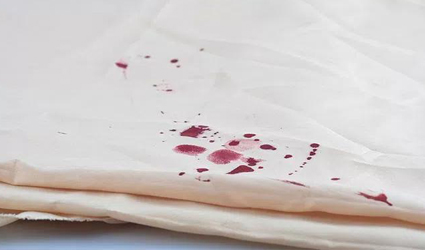 |
BLOOD STAINS Blood stains are of protein origin. The typical red colour is due to a protein (haemoglobin).This protein, if denatured, is fixed irreversibly onto the garment leaving the red stain forever. In order to eliminate this stain we suggest to use the spotting agent D4 Proteiche. Then, to hygienize laundry we recommend to use a powerful hygienising such as Hygienfresh® OXON (on white garments it is possible to use also hypo chlorite or hydrogen peroxide) |
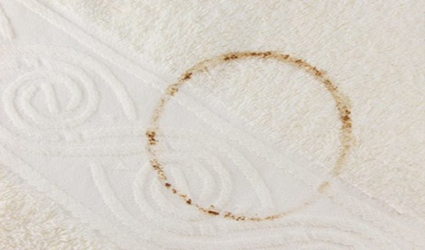 |
OXIDISABLE STAINS Rust stains are originated by the oxidation of iron pieces, that in contact with garment can transfer this oxide. Ferric oxide (Fe2O3) is solubilised by very acid compounds and particular substances. Tintolav said NO to compounds which derive by fluorine because they are very toxic for the users. |
 |
WINE STAINS It is possible to proceed in two different ways: |
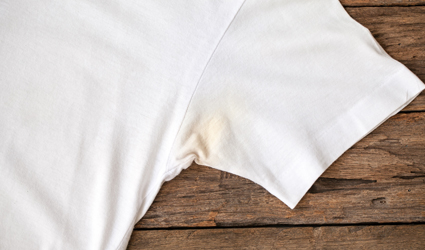 |
SWEAT AND URINE STAINS In order to remove these stains we have to use balanced spotting agents which remove both saline part and organic part. |
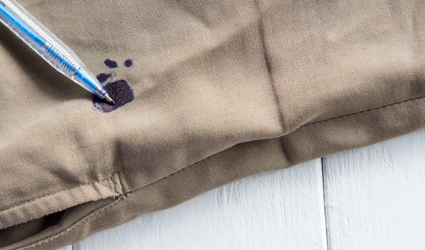 |
FAT-SOLUBLE STAINS Tintolav suggests D3 Vernice: the specific spotting agent for all fat-soluble stains or solvent based stains. Super active spotting agent for the following stains: glue, lipstick, varnish, cosmetics. |
GLI SMACCHIATORI AEROSOL
For a practical and quick spotting it is possible to use some spotting sprays.
These spotting agents are very concentrated and have a wide range action. Their functional capacity will amaze you!!
TINTOSMAC: It is sufficient to spray onto the stain and put the garment into the washing machine!!!
Hygienfresh DRY SPOT: The dry-spot always ready to use. It is sufficient to spray it onto the stain, leave the product dry and then brush. Easy spotting without halos!
|
In order to know exactly which products use in sequence in the different situations |
